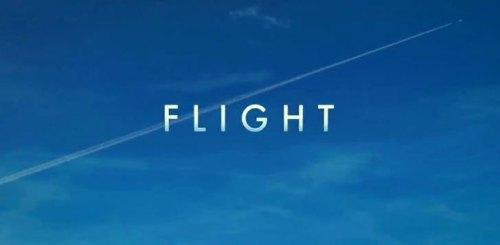
Removing the two final scenes from Flight would be an act of calculated benevolence. Such an operation would leave the film heady and dark, an intoxicating fog. As it is, there’s a sit-com-esque resilience, determined as moronic, hovering around at the precise moment you’re least in the mood to hear it. Sort of like a bartender who won’t shut up about the good weather when you’re trying to nurse heartbreak.
We’re talking about the ending here.
Flight is probably the best film Robert Zemeckis has ever made. It’s probably the best film John Gatins has ever written (Real Steel, Coach Carter.) It’s an ambitious, plodding work. Not quite a thriller. Call it a character-study coaxed into drama, or a drama sabotaged into character-study. If I’m scaring you, don’t worry: you’ll enjoy it.
It’s such an understatement to say that it’s structurally “risky” to start your movie with a stomach-churning action set-piece, and then turn to slow, diffuse drama. It’s as much a work of acrobatic, dazzling, technical skill as Denzel displays in those opening minutes. But the screenplay earns it. There’s something authentically modern, and maybe critical, about the way the film deals almost entirely and tirelessly with the minutiae and ramifications of a single incident. In this story there is only one event, and the first thing to come into question is the certainty that that event had to happen. The next thing to come into question is the soul of our hero.
I should mention that this story structure is refreshingly ancient. It’s not a man on a mission so much as a man under interrogation by his world. The layers of tragedy are constantly being peeled away, and we’re hoping to get a glimpse of the soul underneath the mess. How bad could our hero be? He’s a Hollywood hero after all. Yes, it’s a smart movie.
And Zemeckis here defines versatility, shooting often in a vacuum of personal style, generously lending it all to whatever sequence he happens to be working on (or maybe it’s Don Burgess’s photography.) There’s a shot for everything, and maybe no repeats. The miss-steps you will forgive, because there is another trick up another sleeve. And if it is Don Burgess who deserves credit for the impressively perceptive shooting, then he’s learned a thing or two since Forrest Gump. The show-stopper will no doubt face criticism as gimmicky or meat-headed, but it’s none of those things: the camera hovering over a miniature vodka bottle atop a hotel minibar, waiting with a tragic patience; it’s the most suspenseful thing I’ve seen in a movie this year.
The former moment’s silent sublimity aside, the structure actually recalls Hal Hartley’s talkiest mode. Scene after scene pits our main character in conversation with a cycling, stellar supporting cast. Don Cheadle, Bruce Greenwood, John Goodman and Kelly Reilly are all killing it. Denzel Washington we don’t even need to get into. You should just see the movie. You have some help decoding character psychology as you go, but that doesn’t make it much less fun.
I will say that I found the terrible poster less terrible after twenty minutes watching Flight. It’s a movie about a soul at war, so we have to try to crawl past the eyes.
-Max Berwald
